Definitions of Pressure Control Devices: Regulators, Reducers, Relief Valves, & Safety Valves
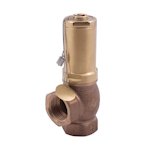
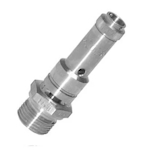
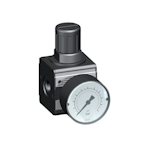
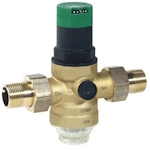
Figure 1: From left to right: pressure relief valve, pressure safety valve, pressure regulating valve, and pressure reducing valve.
Pressure-controlling devices lack universal naming conventions, making the terminology and selecting the proper component difficult.From pressure regulators to safety valves, the names of these devices are often used interchangeably, leading to confusion among users. This article compares and contrasts devices such as pressure regulators, relief valves, safety valves, and reducing valves, providing a clearer understanding of their unique functions and applications. At Tameson, we define them as the following:
- Pressure relief valve: Prevents normal overpressure in a system by opening and closing proportionally and slowly. Oftentimes, the system will continue to run if the relief valve is open. They typically vent the overpressure to the environment.
- Pressure safety valve: Prevents dangerous overpressure in a system by popping 100% open and reducing pressure as quickly as possibly. They typically vent the overpressure to the environment.
- Pressure regulator: They reduce the input pressure to a set output pressure. This helps prevent overpressure and makes a constant output pressure regardless of fluctuations in input pressure. Typically used for gasses.
- Pressure reducer: They reduce the input pressure to a set output pressure. This helps prevent overpressure and makes a constant output pressure regardless of fluctuations in input pressure. Typically used for liquids.
Defining each device
Although the names of pressure-controlling devices are often used interchangeably, each type has some common functions.
Pressure relief valves
Pressure relief valves offer proportional pressure relief by opening gradually as the pressure surpasses the predetermined set pressure. They continue to open in proportion to the increase in pressure up to the blow-off pressure limit. As the pressure decreases, the valve starts to close. Relief valves are commonly utilized to safeguard pumps in closed circuits, where a rapid release could significantly strain the system. They are capable of continuous blow-off.
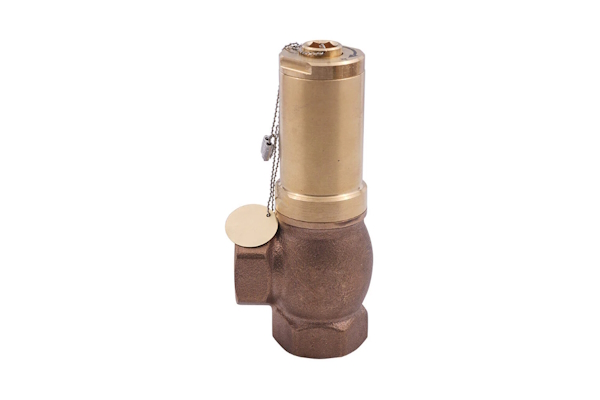
Figure 2: A pressure relief valve
Pressure safety valves
A pressure safety valve operates by rapidly venting the medium to avert pressure buildup, thereby enhancing the system's safety. It typically employs a spring mechanism that triggers the valve to open once the preset pressure level is reached. The response characteristic of safety valves is distinct; they open suddenly when the system's pressure exceeds the target pressure by about 10%, releasing all the excess pressure, often marked by a popping sound. The valve then closes once the pressure falls to roughly 10% below the target level. This rapid pressure fluctuation imposes significant stress on the system, making safety valves a suitable option primarily as a last-resort safety intervention. Learn more about pressure safety and relief valves in our pressure relief valve and pressure safety valve comparison article.
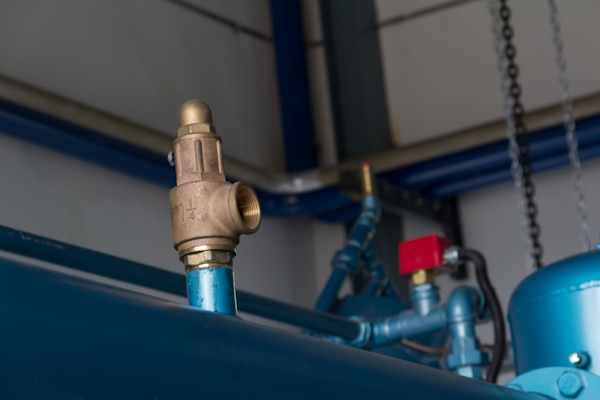
Figure 3: A pressure safety valve at the discharge of a feed gas compressor
Pressure regulators and pressure reducers
Pressure regulators and pressure reducers reduce input pressure to limit and control downstream pressure. Similar to pressure relief and safety valves, regulators and reducers can be used to protect downstream equipment (e.g., water pressure regulators in RVs). However, these devices are not meant for emergency situations. Instead, they are designed to constantly control pressure and do not vent to the atmosphere.
There are not clear differences to easily distinguish between pressure regulators and pressure reducers. However, one norm is to name devices used for gasses regulators (e.g., compressed air regulator) and devices used for liquids reducers. Unfortunately, though, this norm is not universally used.
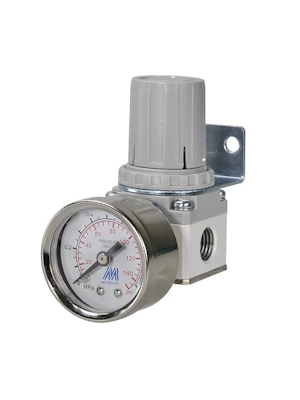
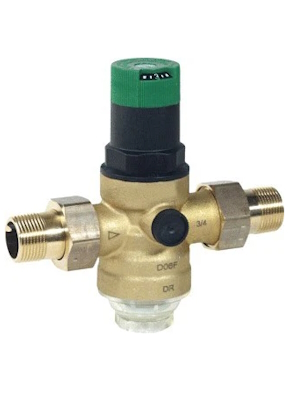
Figure 4: Pneumatic pressure regulator (left) and pressure reducer (right).
Navigating loose naming conventions
Due to the inconsistency in naming pressure control devices, it is more useful to focus on an application's demands and finding a device that meets those demands. Therefore, when selecting a pressure controlling devices for an application, consider the following:
-
Focus on functionality: The primary step is to identify the desired function. Whether it's venting pressure in emergency situations or regulating pressure for operational consistency, the device's function dictates its suitability for the application.
- Venting pressure in emergency situations: Investigate pressure relief and safety valves to determine if they fit the application.
- Operational consistency: Investigate pressure regulators and reducers first.
- Pressure relief and safety valves: Both are designed for emergency use to prevent overpressure conditions. Pressure relief valves open gradually to lower pressure, while safety valves release pressure suddenly. Choose based on the rate at which pressure needs to decrease in the application.
- Pressure regulators vs pressure reducers: The distinction between these devices may lie in the medium they control—gasses for regulators and liquids for reducers. Investigate based on the type of medium and the need for constant pressure control.
- Clarify with suppliers: Due to the variability in naming conventions, it’s important to discuss specific needs with suppliers. Provide details about the application, including the medium, required pressure levels, and operational conditions.
- Technical specifications over names: When reviewing product information, prioritize technical specifications and operational capabilities over the device name. This ensures selecting a device that meets the application requirements.
Example
In an RV, maintaining proper water pressure is crucial for the functionality and safety of the plumbing system. The following example demonstrates how to select the appropriate pressure control devices for an RV's water system.
- Identify the primary function: The primary function needed is to maintain consistent water pressure for daily use and to prevent overpressure conditions that could damage the plumbing.
- Select devices for operational consistency: For maintaining consistent water pressure, a device that can continuously regulate pressure is required. Since the medium is water, a pressure reducer is the appropriate choice. A pressure reducer will ensure that the water pressure remains stable, protecting the plumbing system from pressure fluctuations.
-
Choose devices for emergency pressure relief:Next, consider the need for emergency pressure relief to prevent overpressure conditions that could damage the plumbing system. Two options are available: pressure relief valves and pressure safety valves.
- Pressure relief valve: This valve opens gradually as the pressure exceeds the set limit, providing proportional relief. It is suitable for systems where a sudden release of pressure could cause damage or instability.
- Pressure safety valve: This valve opens suddenly when the pressure exceeds the set limit by about 10%, releasing all excess pressure quickly. It is ideal for situations where immediate pressure relief is critical to prevent catastrophic failure.
- Evaluate system requirements: Given that the RV's water system operates at relatively low pressure and any overpressure condition could lead to leaks or burst pipes, a pressure relief valve is more appropriate. The gradual release of pressure will ensure the system is brought back to safe levels without causing additional stress.
- Clarify with suppliers: Finally, specific needs should be discussed with suppliers. Details about the RV's water system, including the operating pressure, the medium (water), and the required pressure levels, should be provided. This will help ensure the selection of the most suitable pressure reducer and pressure relief valve for the application.
FAQs
What is a pressure regulator?
A pressure regulator is a device that maintains a constant output pressure regardless of variations in input pressure or flow.
What is a pressure relief valve?
A pressure relief valve is a safety device designed to protect a system from overpressure by releasing excess pressure when it exceeds a preset limit.
What is a pressure reducing valve?
A pressure reducing valve automatically reduces a higher inlet pressure to a lower, stable outlet pressure.
What is a safety valve?
A safety valve is a fail-safe device that automatically releases pressure from a system to prevent potential hazards when the pressure exceeds safe limits.




